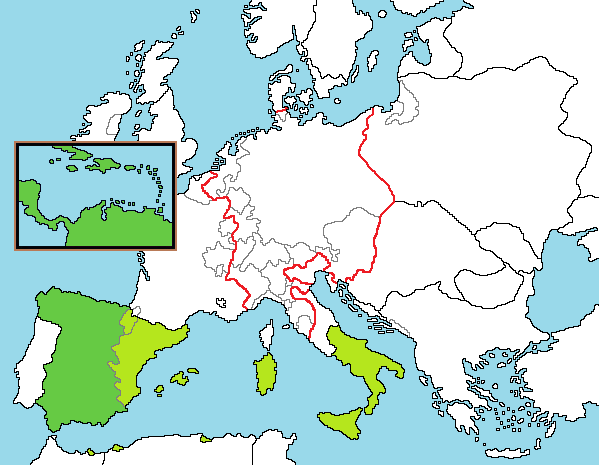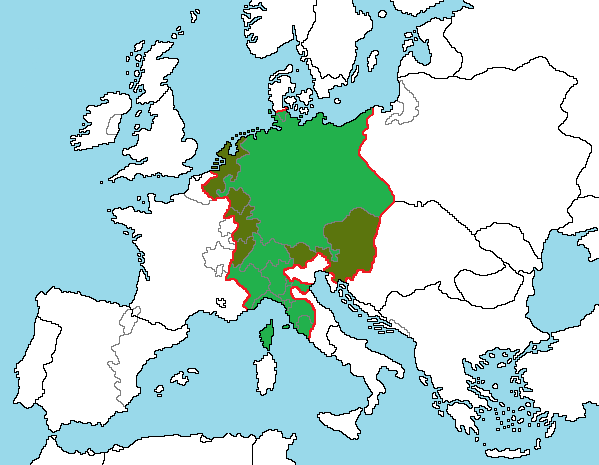THE HAPSBURG EMPIRE IN 1525

The Hapsburg's Spanish Territory
- Dark Green - Kingdom of Castile and Castilian in The Americas
- Light Green - Kingdom of Aragon and Aragonese possessions in Italy
SPAIN SICILY & SOUTHERN ITALY
In 1469 the marriage of Ferdinand King of Aragon and Isabella Queen of Castile united the two most powerful Christian Spanish states and in 1491 these 'Catholic Monarchs' completed 700 year old Reconquest of Spain by capturing Grenada, the last Islamic Moorish state in the Iberian Peninsular but Spanish territory in 1525 extended far beyond the boundaries of modern Spain.
Since the Middle Ages the Kings of Aragon had ruled the kingdoms of Naples, Sardinia and Sicily and this empire in the Western Mediterranean was bequeathed to Ferdinand & Isabella's daughter Joanna the Mad. Joanna's marriage to the Hapsburg prince Philip the Handsome brought the Low Countries, Burgundy, Austria and Northern Italy under Spanish control and their son Charles V inherited this growing empire.
Though Joanna lived until 1555, her descent into madness meant her son ruled the Aragonese Empire as regent.

The Hapsburg's Imperial Territory
- Green - lands ruled by Charles V as elected Holy Roman Emperor.
- Olive - hereditary Hapsburg. lands within the Holy Roman Empire.
- Red Line - boundary of Holy Roman Empire.
GERMANY AUSTRIA & NORTHERN ITALY
In 1525 the Kingdom of Germany was just one state among the hundreds petty principalities, dukedoms, bishoprics and free cities that made up the political patchwork known as The Holy Roman Empire. The Empire was created in 800 AD to ally the Frankish king Charlemagne to the papacy but the pope's attempts to recreate the peace and stability of the Ancient Roman Empire was a failure.
Throughout the Middle Ages the wars fought by popes and emperors for control of Germany and Italy destabilised the whole of Western Europe. Spanish and French claims to various German and Italian territories only added fuel to the fires but in 1519 the question seemed to be settled once and for all with the election of Charles V King of Spain, and heir to all lands ruled by the House of Hapsburg, to the imperial throne.
The Italian, Spanish and German crowns were thus united in the single person of Charles V but the French king Francis I was determined to revive France's historic claims to the imperial territories of Burgundy, Naples, Sicily and Milan. The issue would only be settled by war and the chief battlefield would be Northern Italy.